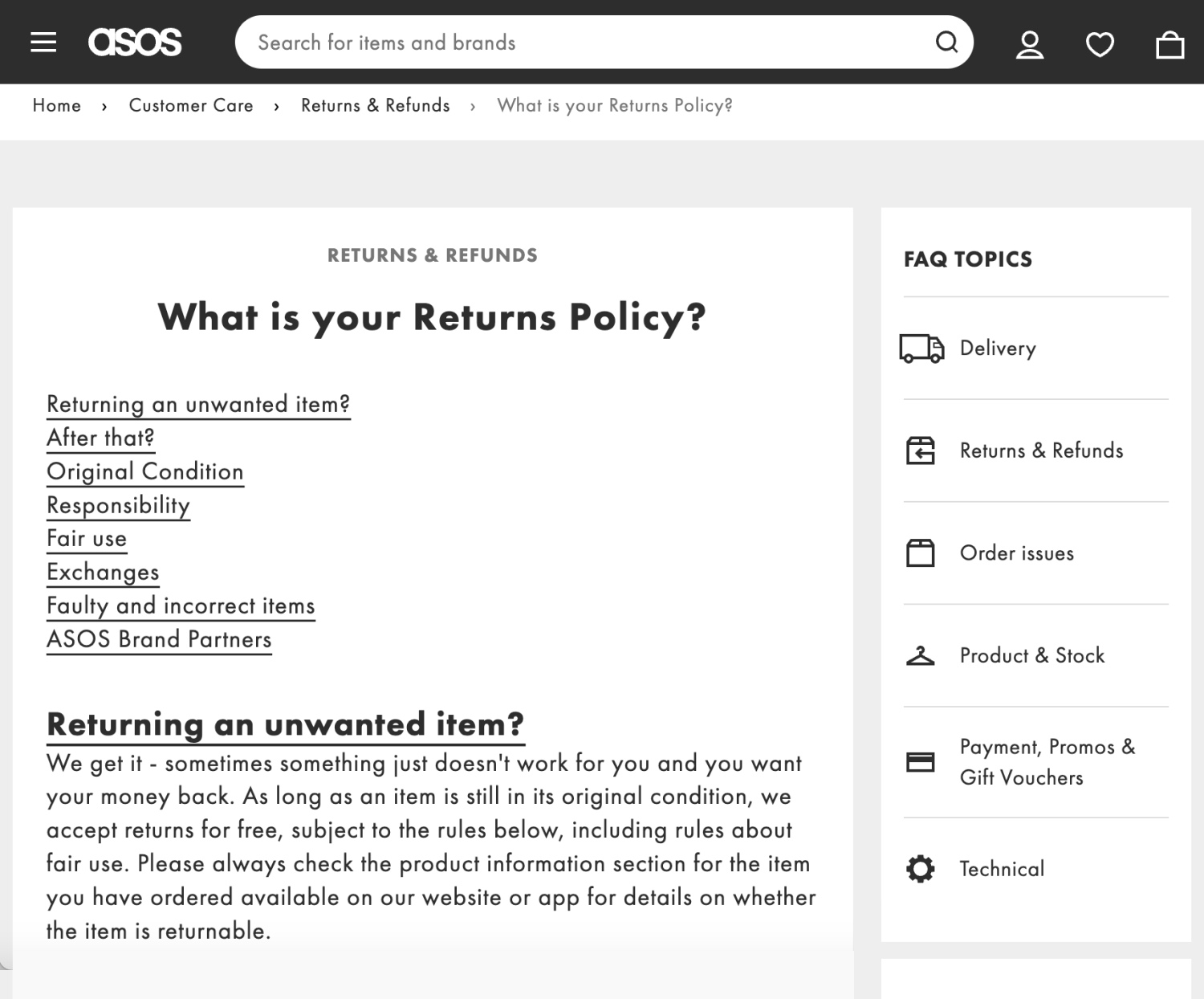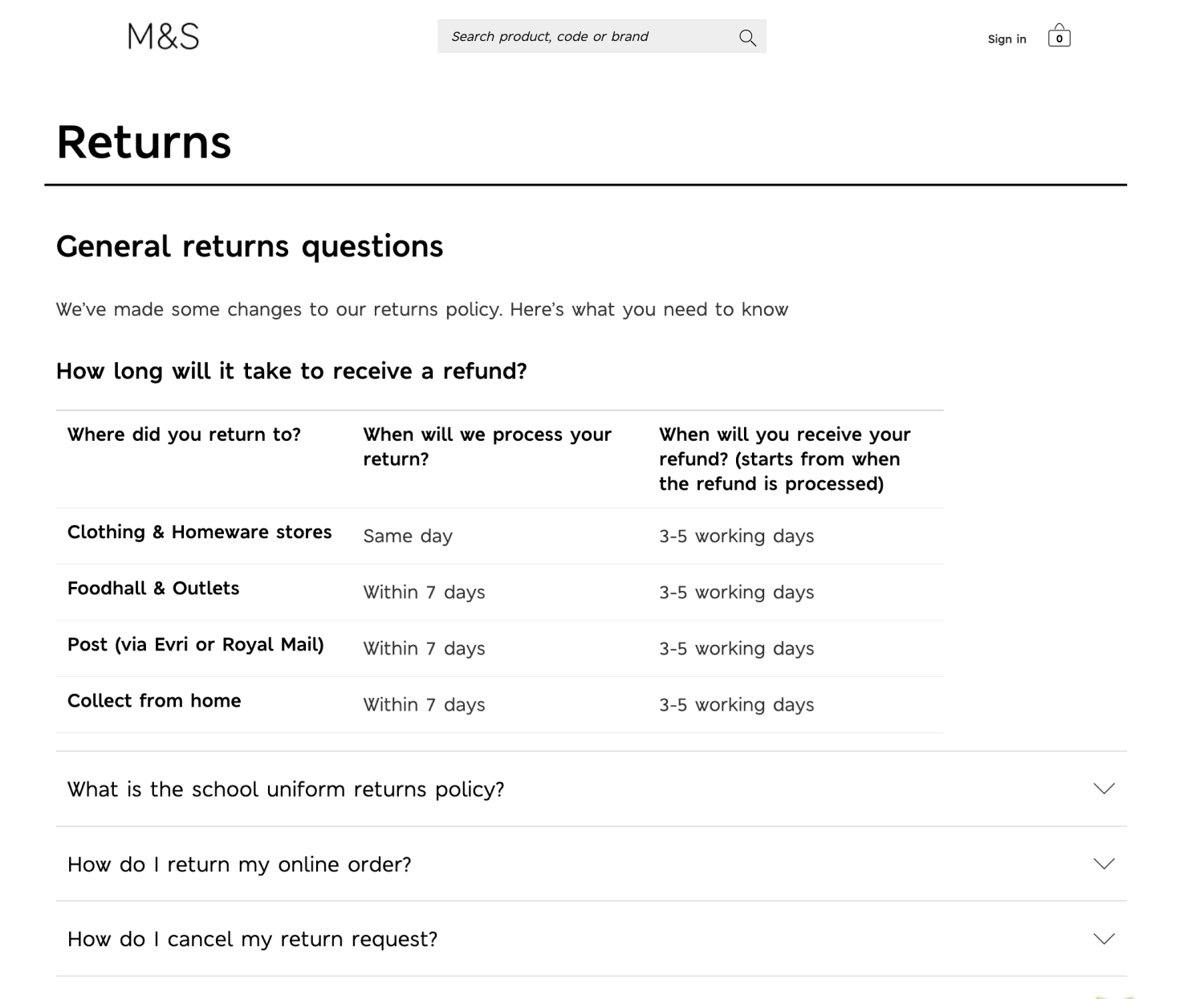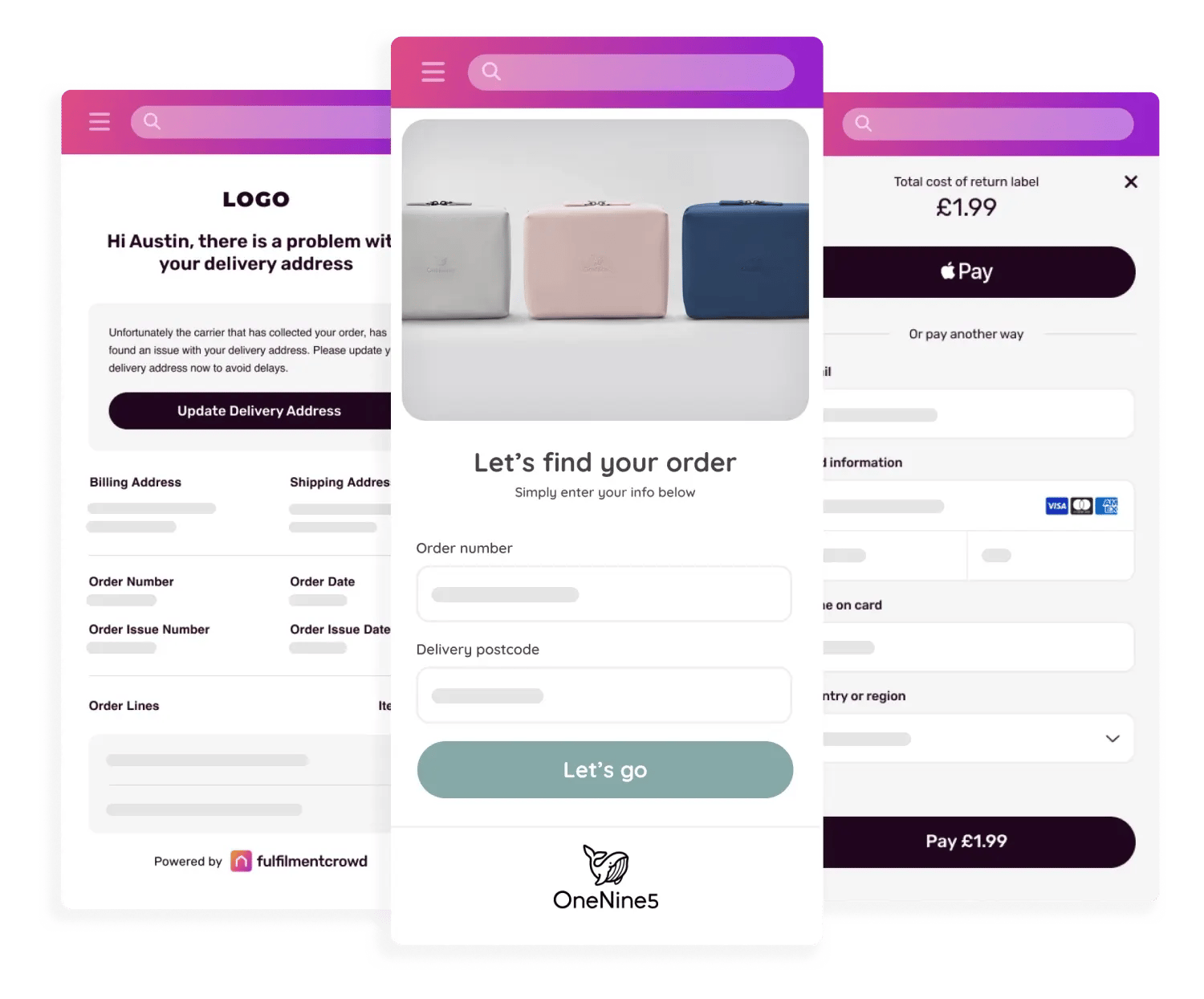Get ready for Black Friday with fulfilmentcrowd’s expert fulfilment tips. From stock organisation to fast returns processing, learn how to handle it smoothly. Plus, find out how switching to fulfilmentcrowd can help optimise your peak season fulfilment.
What online shoppers really want from the returns process
Audio reader

Download your copy of the OmniDisruptors Report.
Lessons from the brands redefining retails in the omnichannel era.
Download the reportShopping online means more choice than ever before. But with choice comes confusion and indecision - which pair of shoes will fit me better? Which pair of jeans will accentuate my curves? Or whatever floats your boat. And with the huge increase in buy-now-pay-later, consumers are using this to their advantage. But what does this mean for brands and the returns process? Does it have to be as painful as initially thought?
Let’s face it, it’s a pivotal factor in customer satisfaction and experience. Your returns policy is one of the biggest reasons why a consumer may buy or not buy from you - in fact, 67% of consumers will consult your return policy before making a purchase. That’s over half of your customer base. Not to be sniffed at.
Once considered a logistical headache, returns are now a strategic touchpoint that can either enhance or damage the relationship between your brand and its customers. Understanding the nuances of a well-managed returns process is crucial. Let’s delve into the evolving expectations of shoppers regarding returns, how these expectations shape the eCommerce landscape, and how companies like fulfilmentcrowd are setting the standard for returns management. The cost of returns might have you reaching for the paracetamol, but the cost of ignoring what consumers really want from the returns process will leave you curled up in a ball in a dark room. In Europe alone, around 78% of shoppers reported that they would be less likely to purchase from a retailer again if they had a negative returns experience. Let’s make sure it doesn’t get to that stage.
What consumers want in the returns process
Let’s start with the cold, hard facts: what do we actually want when it comes to returning items online? We want hassle-free returns that mirror the ease of the overall online shopping experience. So, nothing much then.
- Free returns: A significant majority of online shoppers - 87% in the U.S alone - consider free returns to be an important factor when making online purchases. Offering free returns not only meets consumer expectations, but can also enhance customer loyalty and repeat business.
- Ease of return: Consumers prioritize convenience in the returns process. About 30% of shoppers prefer in-person, box-free drop-offs at third-party locations, while 24% favor box-free returns to brick-and-mortar stores. Interestingly, only 18% of shoppers prefer scheduling a home pick-up, highlighting a preference for more immediate and flexible return options. We have busy, hectic lives and we don’t want the returns process to dictate how and when we’re able to send items back.
- Immediate refunds: Two-thirds of consumers indicated they’re more likely to shop with online stores that offer immediate refunds upon the return of goods. We want faster resolutions and reduced waiting times during the returns process. This might feel counterintuitive for you as a brand, but for consumers, it’s paramount.
- Clear return policies: A transparent and easily accessible return policy is crucial, with 86% of consumers checking return policies before making a purchase. Clarity in return conditions helps manage expectations and can reduce unnecessary returns. Flexibility is key though; even if you’re transparent with your stringent returns policy, this is likely to put buyers off.
- Environmental concerns: Particularly in Europe, consumers are becoming more conscious of the environmental impact of returns. There is growing demand for sustainable return practices, such as eco-friendly packaging and carbon-neutral shipping options.
Failing to meet these expectations can result in lost customers, negative reviews, and a tarnished brand reputation. On the flip side, a well-managed returns process can lead to increased customer loyalty, positive word-of-mouth, and ultimately, higher sales. In order to meet these high expectations, let’s take a closer look at exactly what shoppers dislike when it comes to the returns process.


What consumers dislike in the returns process
- Complexity and inconvenience: Any complexity or inconvenience in the returns process is a significant deterrent. For example, the need to package items for return, especially using the original packaging, or limited return options i.e. only being able to use a single courier, limiting drop-off locations. Again, it comes down to choices, choices, choices.
- Costs associated with returns: The absence of free returns or the imposition of return shipping costs can lead to cart abandonment, or if a purchase has already been made, consumers are far less likely to buy from you again. Nearly half of U.S shoppers have abandoned an online purchase due to a lack of convenient return methods.
- Slow refunds: Delays in processing refunds are a major pain point. Slow refunds can not only affect customer satisfaction, but also discourage future purchases from the same retailer. If a consumer is returning, it’s more than likely that they want to purchase a similar product, either from your store or elsewhere. With their hard-earned cash tied up in your returns process, this can lead to frustration.
- Rigid return windows: Shoppers are less inclined to return to retailers with short or inflexible return windows, particularly when the purchase involves high-value items or gifts. Retailers that offer extended return periods, especially during peak periods, such as Christmas and New Year, are better positioned to meet customer expectations. IKEA, for example, offers a 365-day return window due to the nature of their products.
The rise of Buy Now, Pay Later and its impact on eCommerce returns
The eCommerce landscape has been significantly transformed by the advent of Buy Now, Pay Later (BNPL) services. Platforms like Klarna, Afterpay, and Affirm have gained massive popularity, offering consumers the ability to purchase items immediately and pay for them over time with little to no interest. This payment method has become particularly popular among younger shoppers who are drawn to the flexibility it offers. However, the rise of BNPL has also led to an increase in returns, presenting new challenges for eCommerce businesses.
The "Try Now, Pay Never" phenomenon
One of the unintended consequences of the BNPL trend is what some retailers have dubbed the "Try Now, Pay Never" phenomenon. Shoppers, particularly in the fast-fashion and apparel sectors, are increasingly using BNPL services as a way to "try before they buy." They order multiple items, with the intention of keeping only one or two, and return the rest before the payment is due. This behavior has led to a significant increase in return rates, adding strain to logistics systems and impacting profitability.
PrettyLittleThing and BNPL-driven returns
PrettyLittleThing, a well-known UK-based fast-fashion retailer, has experienced firsthand the challenges associated with the rise of BNPL services. The retailer has seen a sharp increase in returns as customers take advantage of the BNPL model to order large quantities of clothing, often in multiple sizes or styles, with the intention of returning most of the items. This trend, fuelled by the ease and perceived risk-free nature of BNPL, has led to operational challenges, including increased processing times and higher logistical costs associated with managing returns.
In particular, PrettyLittleThing and similar retailers face the daunting task of managing these returns efficiently, all whilst maintaining customer satisfaction. The surge in returns also poses inventory management challenges, as returned items must be quickly inspected, processed, and restocked to avoid holding costs and inventory obsolescence. The return of large quantities of items in a short period can create a bottleneck in the logistics chain, leading to delays and customer dissatisfaction.


So what exactly is the impact of BNPL on the returns process?
The rise in returns due to BNPL has created several operational and structural challenges for eCommerce brands:
- Increased processing costs: Handling a higher volume of returns requires additional resources for processing, quality checks, and restocking. This not only drives up operational costs, but also increases the time it takes to make returned items available for resale.
- Inventory management issues: Frequent returns can disrupt inventory management. Items returned may not always be in a resaleable condition, leading to potential losses. Although brands like ASOS have started adding tags to their items that can’t be removed if an item is to be returned, this hasn’t stopped some consumers taking advantage of using the items. The time lag between an item being returned and restocked can lead to stockouts or overstock situations.
- Cash flow implications: BNPL extends the payment period, meaning that businesses might not receive immediate payment for items that are later returned. This can complicate cash flow management, especially if a significant portion of sales made through BNPL are ultimately refunded. And yes, the irony is not lost on us that customers expect their refund to be made promptly, whilst they expect to not even pay for the items they receive…
- Customer experience considerations: While BNPL can attract more customers, it also sets higher expectations for the returns process. Customers expect a seamless and hassle-free returns experience, and any delays or complications can lead to dissatisfaction and damage brand loyalty.
How can brands manage both Buy Now, Pay Later and regular returns?
The strategy for your return process has to be iterative. With new payment options popping up almost every month, adaptability is key. And if we’ve learnt anything from the PrettyLittleThing example, it’s that customers (and the media) don’t respond too well to simply being told to “shop elsewhere”.
Enhanced product information
Providing detailed product descriptions, size guides, and customer reviews can help reduce the likelihood of returns by ensuring that customers make more informed purchasing decisions. Again, to use ASOS as an example, their website and app enables consumers to choose the best size for them based on their buying preferences at other stores. This clever use of tech increases the chance of customers finding their perfect size, without having to order multiple ones.
Optimized returns process
Streamlining the returns process through automation and efficient logistics can help manage the increased return volumes more effectively. A well-optimized returns process not only helps manage the increasing volume of returns - especially with the prevalence of Buy Now, Pay Later (BNPL) - but also enhances the customer experience and strengthens brand loyalty. So how is it done?
- A clear, transparent, and easily accessible returns policy, including simplified language and no surprises.
- Utilizing tech, so your team can focus on more complex returns and issues. This might look like an automated Return Management System (RMS), which can easily integrate with your eCommerce platform of choice, as well as a customer self-service portal.
- Leverage data (more on this below) by analyzing high return levels on certain products, customer behavior analysis, and inventory management.
- Offer flexibility and convenience. This might look like in-store returns (if applicable), multiple drop-off points, and home pick-up services.
- Being proactive is key. Provide detailed product and sizing information, so customers have everything they need before a purchase is made.
- Adopt sustainable practices to ensure you limit your returns policy’s impact on the environment. Promote exchanges over refunds where possible (and retain revenue too!).
Data-driven insights
Analyzing return patterns can help you identify common purchasing and product issues and take proactive steps to address them, such as improving product quality or adjusting marketing strategies. Our Foresights Analytics solution is a prime example of how technology can be leveraged to manage the complexities introduced by BNPL and high return rates. These solutions utilise advanced data analytics to provide you with critical insights into your delivery and returns processes, as well as allow consumers to manage this process directly.
- Real-time analytics: Foresights provides data that tracks returns in real-time, allowing brands to quickly identify patterns, such as items with higher return rates. This data enables proactive decision-making, such as adjusting product listings, refining marketing strategies, or optimizing inventory levels to better manage high-return items.
- Predictive insights: By analyzing historical return data, Foresights can predict which products are most likely to be returned. This predictive capability helps eCommerce brands to anticipate return volumes, allocate resources efficiently, and adjust their supply chain operations accordingly. For instance, products with high predicted return rates can be flagged for additional quality checks or enhanced product descriptions to reduce returns.
- Customer behavior analysis: Understanding why customers are returning products is crucial. Foresights provides insights into customer behavior, helping brands to identify common return reasons, such as sizing issues or unmet product expectations. Brands can then take corrective actions, like updating size guides or improving product images and descriptions, to minimize future returns.

Enhanced customer communication
With accurate and timely data, brands can enhance their communication with customers regarding returns. For example, they can provide more precise timelines for refunds or exchanges, improving customer satisfaction and trust.
fulfilmentcrowd's Delivery Assured solution not only streamlines the returns process, but also transforms returns management into a strategic asset. Consumers are able to report any products that have arrived damaged, are no longer required or are missing. The platform is designed to enhance this communication by automating the sharing of essential delivery data between three critical parties: the retailer, the consumer, and fulfilmentcrowd as the 3PL provider.
With Delivery Assured, the process begins as soon as the consumer provides all relevant information about their package, whether it’s a confirmation of receipt or an issue with non-delivery. By collecting this information at the earliest possible moment, the platform allows us to initiate investigations and resolve any problems swiftly. This early intervention not only speeds up the resolution process, but also keeps the consumer informed at every stage, reducing uncertainty and enhancing their overall experience.
It’s all about proactive communication, rather than reactive. And we all know what reactive communication leads to. Shoddy brand image and angry customers.

.png?width=1500&height=1244&name=Bocholt-warehouse%20(1).png)
Partnerships with logistics providers
Working with experienced 3PL providers (like us!) can help eCommerce brands manage the complexities of both BNPL-driven returns and the overall returns process, ensuring that returned items are processed quickly and efficiently, minimizing the impact on inventory and cash flow.
Remember, the returns process might feel like a treacherous journey into the unknown, but it’s not just a necessary back-office function. It’s a chance to enhance the customer experience, retain consumers, and stand out against your competitors, who might have adopted a more rigid approach (looking at you, PrettyLittleThing…).
Looking for more industry insights?
Check out our other recommendations just for you!
See allPrepare your brand for Black Friday 2024 with fulfilmentcrowd’s expert insights. Explore our expectations for shopping trends and effective strategies to boost sales, streamline logistics, and meet demand.
Improve returns and improve customer experience with fulfilmentcrowd’s Delivery Assured portal. Automate processes, reduce costs, and protect your brand.


.jpg?width=300&name=Dublin-warehouse%20(1).jpg)
.webp?width=300&name=Omnidistruptors-mockup1%204%20(1).webp)
.jpg?width=300&name=GAAstore-lifestyle-image%20(2).jpg)

 By Alice Davies
By Alice Davies




